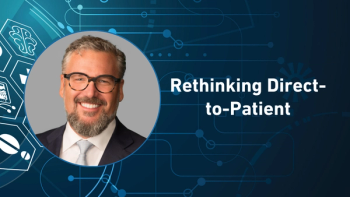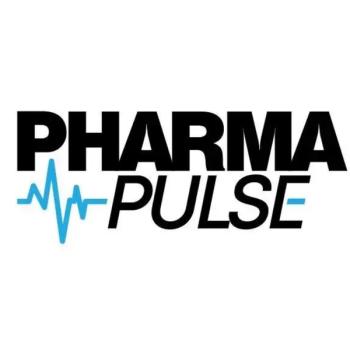
- Pharmaceutical Commerce - October 2009
Training Executives for Marketing Compliance
Conventional training of sales forces is being complemented by executive-level training for corporate compliance
Here’s what executives need to know about marketing regulations: compliance is core to the very culture of your company. Underestimate its importance at your peril. The training of executives on marketing compliance is an art form all its own. The minutiae implied in the word “regulations” would seem fundamentally to exclude the strategy-minded highest organizational levels. But this is one art program they need to attend.
New laws and legislation in process, as well as industry codes and practices, are placing increasing education requirements on sales reps just to get in the door to see prescribers. Beyond that fundamental is the increasing scrutiny of regulators on both product labels and post-approval adverse events that can lead to label revisions. These and other issues have forced compliance out of the realm of the tactical and into the strategic.
It may sound like compliance has become a quagmire, but not necessarily. “We say, ‘use it as an excuse to be great,’” says Brian Lee, founder and CEO at Custom Learning Systems (Calgary, AB) a provider of on-site training, coaching, and service education in the healthcare industry. “It’s not a hard argument to swallow. Our clients need to determine how to meet the expectations of government while getting closer to their customers.”
Michelle O’Connor, senior VP for learning strategy and innovation at CMR Institute (Roanoke, VA), sees it this way: “In any regulated industry it’s easier to be reactive rather than proactive. The challenge is to take a long-range and strategic view of regulatory compliance.” CMRI is an independent, not-for-profit organization offering unbranded education to pharmaceutical, medical device, and biotech professionals.
Execs set the tone
Compliance is “a reflection of an organization’s culture,” she says. The obligation to comply and behave ethically has to be driven from the top down. “Executives have to set the tone.”
And Celeste Mosby, VP for life sciences at Wilson Learning Worldwide (Edina, MN), says that knowing regulatory requirements helps executives develop integrated marketing materials. “Some companies are traditionally very siloed in structure, and decisions are made in a siloed way. As we work with organizations now, we put a big emphasis on collaboration and driving a seamless approach to strategic development,” she says. When they do so, the end product is much more in line with regulations.
Whether siloed or collaborative, compliance is having a major effect on the way pharmaceutical business gets done. And interpretation of requirements can sometimes force that effect into the “difficult” category, according to researchers.
Take the recently revised codes of conduct issued by the Pharmaceutical Research and Manufacturers Assn. (Washington). The codes, issued late last year, revise principles implemented in 2002. Many companies began training on it early this year, beginning its real test, says Steve Mack, project director at PharmaForce International (Reading, PA), a research organization focused on pharmaceutical sales and marketing benchmarking. Executives sometimes need help in interpreting regulations and developing operational procedures that meet them.
A problem with snacks
Mack provides one example of a revised code that actually could not be put into practice by the interpreting company: Bringing a snack item for the healthcare provider’s office is still permissible, he explains. But by the code-complying company’s interpretation, the gesture of a drug rep bringing a bag of M&Ms to an office became quite complicated. The rep would have to stay to see the M&Ms consumed by office staff in a meeting, to ensure that the candy was not taken by a doctor and eaten at home.
Another perceived difficulty: when reps bring in lunch to a healthcare provider office, they would have to monitor attendee job function. If someone shows up to the lunch who is not part of the mainstream medical profession—a file clerk, for example—the sales rep would have to ask them to leave. “They believed they would have to police who attended the lunch, and saw it as impossible,” says Mack.
Other drug makers have reached erroneous conclusions about changes to the code. When reps and management from one company learned that they were no longer able to book monthly lunches in healthcare provider offices, as they were accustomed to doing, they came to believe that providing one meal for, say, 50 office staff members would entitle them to follow-up appointments where they could present detail. “That’s going to lead to problems,” says Mack.
The PharmaForce findings are presented in a report updated in June, Competitive Benchmarking of Leading Pharmaceutical Companies’ Strategies for Leveraging the Medical Liaison Function. The report details the efforts of 13 drug companies in complying with the revised PhRMA codes. PharmaForce researchers surveyed a mix of companies: large, mid-size and small; PhRMA members and nonmembers; adopters of the code and non-adopters. The report, which costs $19,000, contains profiles of the 13 companies.
The revised code does offer some wiggle room for competitive thinking. Regarding speaker honoraria, Mack notes that the rates charged by doctors per lecture are comparable, $1500 to $2000 for a specialist speaker. Increasing the honoraria budget allows for more talks by more speakers. He has seen $30,000 budgets at the low end vs. $150,000 budgets at the high end. “That’s a pretty big variance,” he says, noting that some companies still have not yet established how much they will budget.
A comprehensive act
Like the PhRMA code, the SafeRx Act adopted in Washington, DC, in early 2008 regulates rep interactions with healthcare professionals. SafeRx will require “detailers,” according to an announcement, doing business in DC “to be licensed and held to a professional code of conduct. Those who violate these standards will be fined and could have their licenses revoked.” The bill also requires reps to have an appropriate educational background. In addition, it created an academic detailing program “to educate doctors on the latest developments in pharmaceutical research,” the announcement says. And it prohibits members of the DC medical advisory committees from receiving gifts from pharmaceutical companies.
What’s significant about the SafeRx Act is not so much its directness in singling out the sales rep function, but the speed at which it is spreading.
“States are jumping on board and adding to the requirements,” says Mosby of Wilson Learning. “Unique legislation is being introduced that’s going to impact marketing in a big way. Executives have to know how it will impact their strategy this year and into the future.”
Industry training and education providers have seized the opportunity. Wilson Learning has submitted ten courses for the approval of the District of Columbia’s Board of Pharmacy to satisfy SafeRx continuing education requirements. CMRI boasts 42 courses and one certificate program that have been approved.
“We are focused on education, not regulation,” says O’Connor of CMRI. In fact, she says the Institute is opposed to some of the regulations proposed by states. “We believe education is the answer. That’s the viewpoint we take with all of our clients.” CMRI also provides research of physicians, she says, “to get a deeper dive on what they hope to see from reps and the pharmaceutical industry in general.”
Accountability at C level
A key component of marketing compliance education is accountability. “You have to teach accountability and its execution,” says Lee of Custom Learning Systems. “The trickle-down effect—from C-level on down—is not effective. Our goal is to get them excited about accountability that works.”
Real accountability, he maintains, needs to rest at the C level and the director level. Its teaching requires several steps in the Custom Learning Systems model. The first step involves getting senior management off site and “spending quality time with them. This is budget and time dependent, of course, but we usually do it for two days.” During this Leadership College, trainers work to make sure that all members of the senior team are equal drivers.
The Leadership College is followed by getting buy-in at the director/manager level during a leadership briefing. Lee says that accountability workshops for all leaders are next, during which the CEO leads the discussion and spells out the main expectations for performance. Having CEOs lead this discussion is important, he says, because “it helps them understand the significance of their unspoken power. We get a higher level of ownership when everyone is involved in setting the bar.”
The accountability workshop is followed by education, which Lee prefers to call “leadership development,” and it’s conducted as just-in-time training. Next is the launch of performance improvement teams. “You can’t hope that busy executives can do the implementation. Unless there is a structure in place when you do the training, forget it—93% of what is learned in the classroom is forgotten in 14 days.”
Coaching is crucial
The final steps are coaching and progress reports. Coaching begins with an assessment of how the leaders are performing relative to stated goals. “Coaching is crucial,” says Lee, in part to keep the momentum going. “The ability to execute after the training is where they fall down.”
He convenes a summit for leader presentation of progress reports before their peers. “We give them a chance to brag and fine-tune ideas; to talk about what happens next.” That usually involves trainers training other employees, extending the reach to the front lines.
Like the case with the Custom Learning Systems model, accountability at the executive level is also germane in the efforts at CMRI. “Government takes a broader view of accountability when it comes to compliance. It’s not just the rep who’s targeted,” says O’Connor.
“The obligation to comply and behave ethically applies to everyone in the industry,” she says, “and it has to be driven from the top down. Executives have to set the tone, especially to those who report to them. They serve as role models.”
The ethics element
In the courses offered by CMRI, accountability and obligation are strongly tied to ethics. In one course, “Pharmaceutical Ethics and Compliance,” the instructor devotes time to the reasons for ethical and regulatory compliance and the range of activities affected by them. In addition, the course outlines key U.S. laws related to ethical behavior in all aspects of the pharmaceutical industry (from research and development to sales and marketing) and guidelines developed by professional and industry groups to promote ethical and compliant behavior.
“Being ethical and behaving ethically is more than acting lawfully,” says O’Connor. “Executives have to understand the principles that underlie the regulations, and then be proactive about them.” CMRI offers courses on business ethics as well as medical ethics. “When you understand the rationale for behaving ethically, it’s easier to understand why you have to comply. It’s essential to build knowledge around regulations but also how they are applied, not just at pharma companies, but at the FDA and with the public as well.”
O’Connor says that executives react very well to the ethics element. “It helps them take a broader view. Instead of saying ‘This is being forced on me,’ they see how it can benefit them.”
Benefits of a cross-functional view
Like Lee at Custom Learning Systems, O’Connor sees implementation as one of the big challenges in marketing regulation compliance. Another is working across functions. Marketing compliance requires cross-functional collaboration, she says. “It’s to their benefit if they don’t take a siloed view.”
CMRI works with all sizes of pharmaceutical company: the top 10, mid-size and small companies and biopharma. Although it varies from company to company, she says that in big pharma “the trend over the last couple of years is toward more of a non-siloed approach. They are taking the strategic view.”
One driver is the aforementioned SafeRx Act, and the pending legislation at the state level. The drug giants are showing “recognition that we all need to work together,” says O’Connor. “There needs to be a cooperative, concerted effort.”
Mosby of Wilson Learning concurs. Good results have come from times when marketing, sales and training have worked collaboratively with medical affairs, she says. “I’ve seen some best practices come out of that partnership. We encourage, yet executives drive, breaking down the silos. With the current regulatory environment it makes good sense to do this partnering up front rather than doing many reviews later.”
Getting strategy buy-in
Mosby also finds that accountability is key to marketing regulation compliance. Along with teaching executives how to think strategically, it’s a hot topic, especially for marketing executives. “We help them build strategic alignment and get buy-in on strategy,” she says. “They have to think through processes to support goals.”
Mosby also says that most of the Wilson Learning executive training is applications based, using a simulated environment. Participants are asked to tackle certain challenges. “There’s dissemination of content, then they get right into applications,” she says.
Company size can make a big difference in training implementation. “A midsize company has fewer layers of management, so decision-making power is quicker and more fine tuned. In big pharma, decision-making is more complex; you might find standard operating procedures for marketing; a lot more process,” says Mosby.
Building skills that help executives create shared vision and strategy is her goal. She wants to help executives lead organizational change, inspiring employees across functions. “Leaders must create the environment for inspiration,” she says. “They can’t force it.” PC
Articles in this issue
about 16 years ago
Bristol-Myers Squibb, Roche Lead on Environmental Sustainability Scoringabout 16 years ago
Comparative Effectiveness with the Gloves Offabout 16 years ago
New effort on collaboration over product serializationabout 16 years ago
A small victory for Pharma in EU parallel trade warabout 16 years ago
Regenerative medicine coalition gets organizedabout 16 years ago
Flu Season Promises to Put a Spotlight on Vaccine DistributionNewsletter
Stay ahead in the life sciences industry with Pharmaceutical Commerce, the latest news, trends, and strategies in drug distribution, commercialization, and market access.





